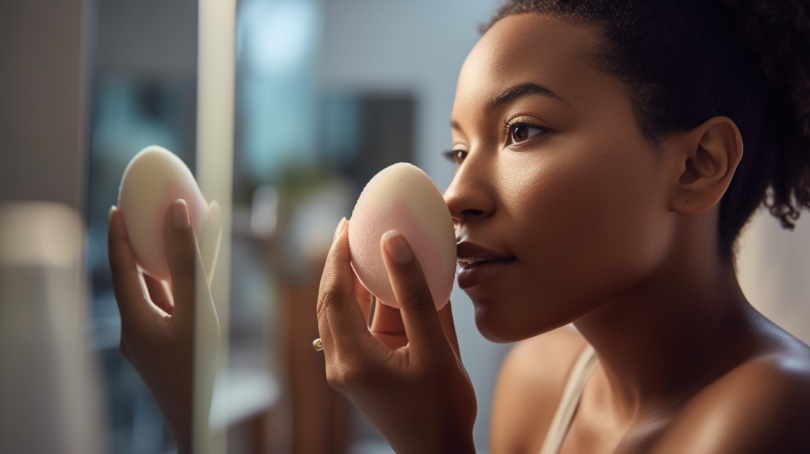Preventing Bacteria Growth on Sponge Applicators: Effective Strategies
Welcome to our comprehensive guide on preventing bacteria growth on sponge applicators! Sponge applicators are commonly used for various purposes, such as applying makeup, skincare products, or even for household cleaning. However, these versatile tools can quickly become breeding grounds for bacteria if not properly cared for and cleaned. In this tutorial, we will provide you with effective strategies to keep your sponge applicators free from harmful bacteria and ensure their longevity.
Understanding the Importance of Preventing Bacteria Growth
Before we dive into the strategies, let’s first understand why it is crucial to prevent bacteria growth on sponge applicators. Bacteria thrive in warm and moist environments, making sponge applicators an ideal breeding ground. When these bacteria come into contact with your skin or any other surface, they can potentially cause infections, irritations, or even lead to more severe health issues.
Moreover, the accumulation of bacteria on your sponge applicator can compromise its performance and durability. The presence of bacteria can deteriorate the quality of the sponge material over time and shorten its lifespan. By taking preventive measures to inhibit bacterial growth, you not only protect your health but also prolong the usability of your sponge applicators.
Step-by-Step Guide: Preventing Bacteria Growth on Sponge Applicators
Now that we understand the importance of preventing bacteria growth on sponge applicators let’s explore some effective strategies to ensure their hygiene and longevity:
- Cleanse Before First Use: Before using a new sponge applicator for the first time, it is essential to cleanse it thoroughly. Rinse it with warm water and mild soap to remove any manufacturing residues or dirt particles.
- Wash Regularly: Regular washing is crucial in preventing bacterial buildup on your sponge applicator. After each use, gently rinse the sponge under warm water to remove any leftover product. Then, apply a small amount of mild soap or a dedicated sponge cleanser and work it into a lather.
- Thoroughly Rinse: After lathering the sponge, make sure to rinse it thoroughly under warm water until the water runs clear. This step ensures that all the soap residue and bacteria are washed away.
- Avoid Harsh Chemicals: While cleaning your sponge applicator, avoid using harsh chemicals or abrasive cleaners as they can damage the sponge material and irritate your skin. Stick to mild soaps or specifically formulated cleansers designed for sponge applicators.
- Dry Properly: Proper drying is crucial in preventing bacteria growth on your sponge applicator. Squeeze out excess water gently without wringing or twisting the sponge, as this can cause deformation. Place the damp sponge in a well-ventilated area to air dry completely before storing.
- Store in a Clean and Dry Place: Storing your sponge applicator in a clean and dry location is essential to prevent bacterial contamination. Avoid storing it in damp areas like bathrooms where bacteria thrive. Instead, opt for a clean makeup bag or container that allows airflow.
- Replace Regularly: No matter how well you care for your sponge applicators, they will eventually wear out and become less effective at blending products. As a general rule of thumb, replace your sponge every three months or sooner if you notice signs of deterioration, such as a foul odor or visible wear and tear.
Additional Tips for Sponge Applicator Hygiene
In addition to the step-by-step strategies mentioned above, here are some extra tips to maintain sponge applicator hygiene:
- Disinfect Regularly: To provide an extra layer of protection against bacteria, consider disinfecting your sponge applicator once a week. You can do this by soaking the sponge in a mixture of warm water and gentle antibacterial soap for a few minutes. Rinse thoroughly and let it air dry.
- Opt for Antimicrobial Sponge Applicators: Another option is to invest in antimicrobial sponge applicators. These are specially designed to inhibit bacterial growth, making them a great choice if you are concerned about hygiene.
- Keep Personal and Professional Applicators Separate: If you use sponge applicators for both personal and professional purposes, it is essential to keep them separate. This practice helps prevent cross-contamination between different products and environments.
- Avoid Sharing Applicators: Sharing sponge applicators with others can introduce bacteria from their skin or products onto your applicator. It’s best to avoid sharing to minimize the risk of bacterial contamination.
In Conclusion
Maintaining proper hygiene and preventing bacteria growth on sponge applicators is crucial for both your health and the longevity of these valuable tools. By following the step-by-step strategies outlined in this guide, you can ensure that your sponge applicators remain germ-free and perform optimally.
Remember, regular cleaning, thorough rinsing, proper drying, and storing in a clean place are key practices to implement. Additionally, consider disinfecting regularly or investing in antimicrobial options for added protection.
By incorporating these preventive measures into your routine, you’ll enjoy the benefits of using clean and bacteria-free sponge applicators, enhancing your makeup application, skincare routine, or household cleaning tasks.




